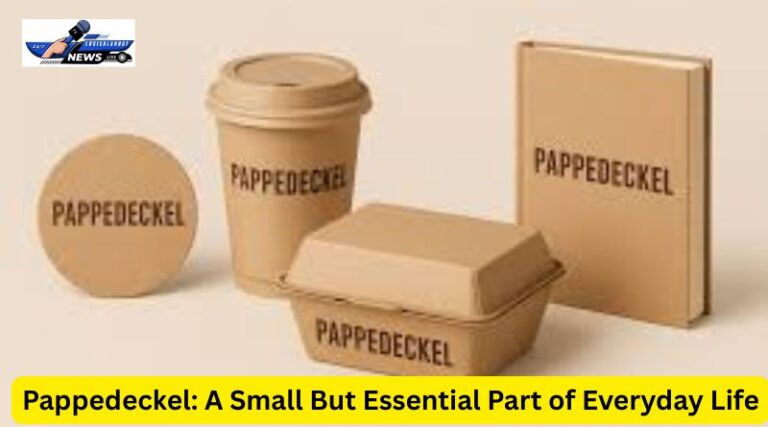In our fast-paced, convenience-driven world, we often overlook the smallest items that play a surprisingly large role in our daily routines. One such item is the pappedeckel — the humble cardboard lid that sits atop your takeaway coffee cup, juice container, or food packaging. While it might seem like a minor part of modern packaging, the pappedeckel serves multiple purposes and reflects broader trends in sustainability, convenience, and modern design.
What Is a Pappedeckel?
The word pappedeckel is German and directly translates to “cardboard lid” in English. It typically refers to the flat or slightly domed cover made of cardboard or paperboard material used to seal containers. These are commonly seen on takeaway coffee cups, soup bowls, or small food trays. Designed to be both lightweight and eco-friendly, pappedeckel can also help retain heat, prevent spills, and serve as a hygienic barrier between your food and the outside environment.
Unlike plastic lids, which have long contributed to global waste issues, pappedeckel options are more sustainable. Most are made from recycled materials and are biodegradable or compostable, making them an excellent alternative for businesses and consumers looking to reduce their environmental impact.
The Functionality and Design of a Pappedeckel
A well-designed pappedeckel is more than just a cover. It is engineered to provide a snug fit, resist moisture, and sometimes even offer insulation. Depending on the product it is paired with, the lid may include perforated openings for drinking, ventilation holes for steam, or printed branding to enhance customer experience.
For instance, in the coffee industry, a pappedeckel serves several important functions. It keeps the drink warm for longer, prevents spillage during transportation, and allows for easy sipping through an opening. Some versions also feature a foldable tab to seal the opening when not in use. These functional details show how even a simple object like a cardboard lid involves thoughtful design and utility.
Environmental Impact and Sustainability
One of the most significant advantages of the pappedeckel is its role in promoting environmental sustainability. With increasing awareness of plastic pollution and single-use waste, companies are turning toward greener solutions. Cardboard lids decompose much faster than their plastic counterparts and can often be recycled along with the cup or container they accompany.
Moreover, some pappedeckel products are made from FSC-certified paper, which ensures that the materials are sourced responsibly from managed forests. Others may be manufactured using post-consumer recycled materials, further reducing the need for virgin resources. In this way, choosing pappedeckel over plastic lids supports a more circular and responsible economy.
Read also: Spire Recovery Solutions: A Modern Approach to Debt Collection
Market Demand and Business Implications
As consumer behavior shifts toward eco-consciousness, the demand for sustainable packaging options like pappedeckel is on the rise. Cafes, restaurants, and catering services are increasingly seeking packaging that aligns with their brand values while meeting customer expectations. Offering products sealed with a pappedeckel can enhance a company’s reputation and appeal to environmentally aware customers.
Additionally, the production of pappedeckel supports local paper and packaging industries, particularly in Europe where sustainability regulations are stricter. By investing in this form of packaging, businesses not only contribute to environmental goals but also support ethical supply chains and domestic production.
Challenges and Future Innovations
Despite its many benefits, the pappedeckel is not without challenges. For example, its moisture resistance may vary depending on the type of paper and coating used. If not properly treated, some lids may become soggy or lose their shape. However, ongoing innovation in material science is helping to address these issues. Water-resistant coatings made from natural substances, like plant-based resins or biodegradable waxes, are being introduced to make the pappedeckel even more durable and effective.
In the future, we can expect even smarter and more sustainable designs, such as lids embedded with QR codes for product tracking or those made entirely from agricultural waste materials. These advancements will further cement the pappedeckel as a key player in the sustainable packaging revolution.
Conclusion
Though it may seem like a simple object, the pappedeckel plays an important role in modern life, particularly as the world pivots toward sustainable living. Its combination of practicality, environmental friendliness, and design flexibility makes it a standout choice for businesses and consumers alike. Whether you’re sipping a hot drink on the go or enjoying a takeaway meal, the next time you encounter a pappedeckel, you’ll know that there’s more to this little lid than meets the eye.

